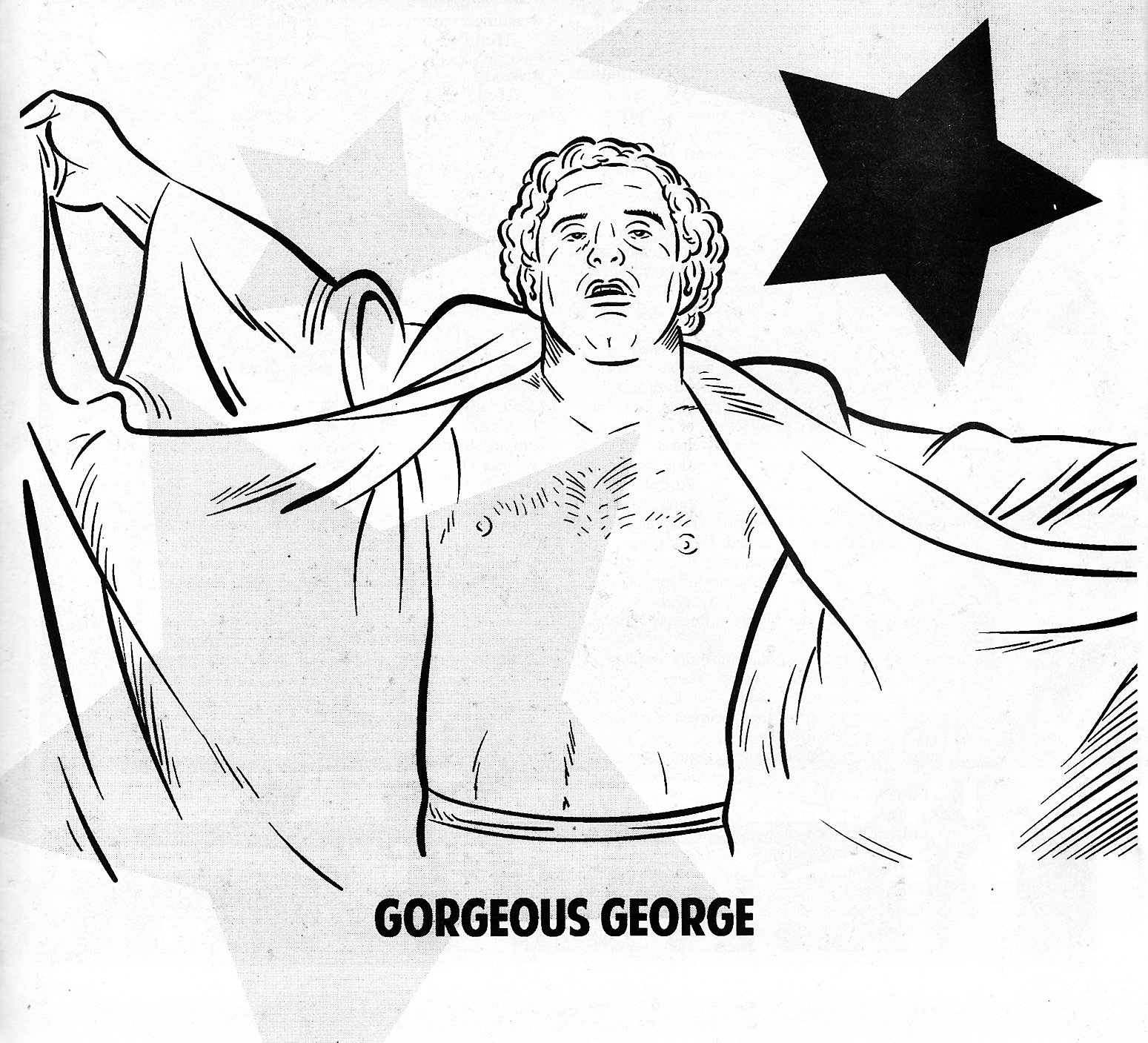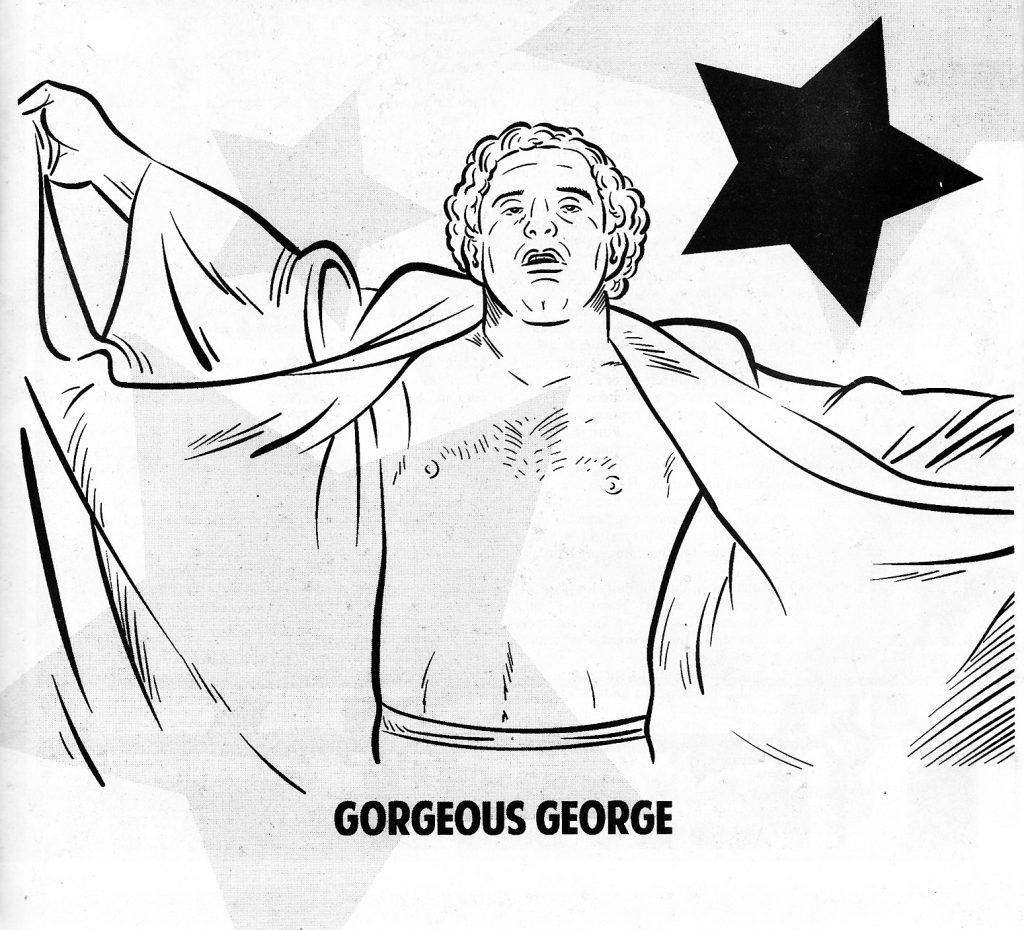One Punk’s Guide to Professional Wrestling: PART ONE


I’ve been watching and following professional wrestling for as long as I can remember. I grew up watching WWF (World Wrestling Federation) Saturday mornings in my hometown of Moorhead, Minn. I loved—and hated—all the late ’80s stars like Randy Savage, Ultimate Warrior, Andre The Giant, Mr. Perfect, Ted Dibiase, Bobby Heenan, Roddy Piper, and of course, Hulk Hogan. I had no idea then, at age nine or so, that I was living in a state steeped in wrestling history. I wasn’t even aware that there were other wrestling companies out there fighting for my viewership, and that it was a cutthroat business with a mafia-like history of backstabbing, double-crosses, and betrayals. While I was watching Hulk Hogan beat up every bad guy who came his way, I had no clue that just a few years before, he had been lured away from the AWA (American Wrestling Association)—a longstanding and successful wrestling promotion based in my home state—to the WWF, their New York rivals. Hogan’s jump from Minnesota to New York was devastating. It ultimately put the AWA out of business. These kinds of stories were absolutely fascinating to me. As I got older and started to read books on the subject, I was so excited to learn of the history that happened right in my backyard and beyond. Once the internet became available and the information started to flow, I had a field day.
From that point on, it was my goal to know more about the history of pro wrestling than anyone else in the room. I may not know who the current WWE (World Wrestling Entertainment) champion is, but I can tell you all about which belt was used for “Nature Boy” Buddy Rogers’ month-long, 1963 WWWF (World Wide Wrestling Federation) championship run and why.
As the years passed, I noticed more and more punks getting into wrestling. I started to wonder why. Lars Frederickson, of Rancid fame and lifelong wrestling fan, said, “Maybe because it’s like an outcast thing.” It’s true wrestling fans, like punks, suffer from a certain stigma. Often, true fans of both are encyclopedic in their knowledge, making them an outsider surrounded by casual fans.
Even when punk became a hell of a lot more tolerated by the mainstream in the mid-1990s (even lucrative), its true base remained marginalized. Wrestling has always carried a similar mark. Even at its most popular, much of wrestling’s fan base is the object of criticism, insults, and stereotypes. The wrestling arena, just like the basement or DIY venue, is somewhere you can go to be among fellow freaks and weirdos.
Punks and wrestling go back to the genre’s inception, and in one case, strangely, even before that. In the early ’70s, Portland, Ore.’s Pacific Northwest Wrestling (PNW) territory had a young heel (bad guy) who was breaking all the rules. Beauregarde (real name Larry Pitchford) was a rocker who couldn’t be tamed. He was one of the first wrestlers to use original music to accompany him to the ring. He even released an album in 1971 of psychedelic-influenced tunes. On it, a seventeen-year-old named Greg Sage played guitar. A few years later, Sage went on to form the highly influential Portland staple, The Wipers.
The Dictators, another influential band, had an affinity for wrestling that manifested in the band member’s stage names. “Handsome” Dick Manitoba, Ross “The Boss” Friedman, and Scott “Top Ten” Kempner all took their names in an effort to mimic their beloved sport and its assortment of flamboyant characters.
Early L.A. punk band the Angry Samoans lifted their name straight off the popular tag team The Wild Samoans, who spent most of the ’70s and ’80s in the NWA (National Wrestling Alliance) and WWF.
Legendary punks, The Cramps, in 1981 released a cover of the amazing song “The Crusher,” which was originally performed by Minneapolis garage band The Novas in 1964. A few years later saw the appearance of The Dwarves, and most noticeably their guitar player, HeWhoCannotBeNamed sporting a Mexican Lucha Libre mask on stage. (Although, I suspect the mask is more of a ploy to hide his identity than a true display of wrestling affection.)
In the late 1980s, wrestling got its first true punk rock spokesmen. The always controversial ANTiSEEN from Charlotte, N.C. were hardcore wrestling fans who took their love to sometimes extreme levels. Singer Jeff Clayton often carries a microphone stand wrapped in barbed wire on stage and uses it to bust himself open, bleeding all over the place. The band has an unabashed affection for wrestling’s golden age (the 1950s through the early ’80s), as well as more extreme aspects such as Japanese death matches and the early years of ECW (Extreme Championship Wrestling).
Tony Erba, of the insanely wild ’90s Cleveland, OH bands H100s, 9 Shocks Terror, and Gordon Solie Motherfuckers is another well-known wrestling aficionado and connoisseur of the sport. I got my first death match tapes from his Crimson Mask Video VHS distro after meeting him at a show in Minneapolis in the late ’90s. As with ANTiSEEN, record titles, album artwork, and other merch from these bands often displayed wrestlers from the golden age on up through the ECW era. The Sheik, Fred Blassie biting Rikidozan, and Axl and Ian Rotten’s infamous “Taipei Death Match” have all made appearances.
The ’90s powerviolence scene had some wrestling representation as well. Most famously is perhaps the cover of Spazz’s 1997 LP, La Revancha, which features Cuban born wrestler, Konnan, waving a Mexican flag while wearing the AAA (Asistencia Asesoría y Administración) heavyweight title belt. But, it was the Pennsylvania band, The Ultimate Warriors, however, that really connected the break-neck aspects of both lifestyles. Their 2002 album, Our Gimmick Is Wrestling, is a non-stop barrage of samples and references to wrestling’s most violent, charismatic, and down-right weird aspects.
Then there’s the curious case of Bob Mould. In 1999, the one-time singer and guitar player for legendary Minneapolis punk band, Hüsker Dü, found himself in a unique position. A die-hard wrestling fan since childhood, Mould was somehow invited by then Executive Vice President of WCW (World Championship Wrestling), Eric Bischoff, to a few of the company’s live events. This led to him being hired to fill the “gorilla position.” His job was to be the last person a wrestler saw on their way down the ramp. From there, he gave them any last-minute changes in their matches, as well as communicated with the referee via wireless earpiece.

Perhaps the strangest of all, though, is the brief moment The Misfits became wrestlers. In 1999, Canadian-born, Mexico-trained wrestler, Vampiro, was causing WCW bookers some headaches. They had no idea how to use this odd, corpse-painted, dreadlocked, yet popular, weirdo. So, Vampiro made a few suggestions, one of which was to bring in his favorite band to act as his entourage. The Misfits’ tenure was short-lived, culminating in a cage match between “Dr. Death” Steve Williams and Jerry Only, with the rest of the band dumping barbecue sauce all over Williams’ manager Oklahoma (Ed Ferrara), but it was a sight to be seen. (“Here comes Doyle, and the other one!” Bobby “The Brain” Heenan remarked as he called the action during a Misfits match.).
But it’s not just the punks who are into wrestling. The wrestlers are into punk too—at least a few of them, anyway. The punk rock “look” has been used in wrestling for decades. From The Road Warriors’ spikes and mohawks throughout the 1980s to The Rockers and The Midnight Express with their amazingly ’80s pseudo-new wave spandex, wrestling has always tried—and mostly failed—to properly capture punk rock. The reason for this is simple. The wrestlers weren’t punks. As with television and film portrayals of the subculture, the attempts at capturing the spirit, look, and attitude of punk falls laughably short of authentic.
The mid-’90s saw the beginnings of a shift in this trend with both Raven (Scott Levy) wearing a Suicidal Tendencies shirt in his ECW matches and the debut of Amy Dumas in 1999. As Lita in the WWF, Dumas was arguably the first true punk rocker to get over in one of the big companies. Her style, while still flashy and costumey by any punk’s standards, seemed much more authentic. The reason for this was simple: Dumas grew up in the punk scene. There was, at last, a real fan of punk rock in the squared circle.
More would come. In later years, Daniel Bryan (Bryan Danielson) came to the ring wearing a modified Dead Kennedys shirt (the “DK” easily changed to “DB”), but it was the break out of CM Punk (Phill Brooks) that brought the combination of punk rock and wrestling to a crescendo.
It’s all right there in the name: gimmicky on its surface, but descriptive in its connotation. Brooks is an actual, honest-to-god fan of punk rock, incorporating many elements of it into his persona and merchandise, beyond just the name. A strict adherent to the straightedge lifestyle, Brooks has used this in both heel (bad guy) and babyface (good guy) roles. As a babyface, he extols the health benefits of abstaining from drugs and alcohol, using his station as a role model to help kids stay clean. As a heel, he brilliantly portrays the militant, holier-than-thou side that straightedge is known to sometimes produce, admonishing others for their personal choices while preaching his doctrine of clean living (this is especially effective with wrestling’s more beer-friendly crowds).
Punks in the squared circle generally have strong roots in independent wrestling, working in front of small crowds for very little money. CM Punk, Daniel Bryan, Raven, Lita, et cetera all cut their teeth on the independent circuit. The parallels one can draw between the life of an indie wrestler and that of a DIY punk band are numerous and often true. According to indie wrestler Matt Cross, “What is more DIY than an indie wrestler? I have no agent, everything goes through me… I have my own shirts. I have a guy design the shirts and I hawk the shirts.”
It’s hard to argue with that.
Minneapolis-based wrestler, Arik “The Anarchist” Cannon has taken his love for punk rock, perhaps further than anyone. With a studded and patched sleeveless vest, and Ramones and Operation Ivy-themed merch, Cannon operates and travels with the same principles of most touring punk bands. Cannon’s biannual “Wrestlpalooza” shows, held at legendary Minneapolis venue, First Avenue (where I saw my first big punk shows in the early ’90s) showcases not just wrestling, but burlesque troupes, and, you guessed it, punk bands. These sold-out shows draw big crowds and often turn fans of one showcase piece into fans of another. Punk rock and wrestling are quickly becoming inseparable in Minnesota.
A similar phenomenon is emerging in Gainesville, Fla. Fest Wrestling—run by the yearly punk fest organizer, Tony Weinbender—has been a hot territory for up-and-coming indie stars. The first promotion to be truly born from the punk scene—not just co-opting or adopting aspects of it—Fest Wrestling’s bi-monthly shows are quickly helping to change how punk and wrestling comingle.
This is all well and good, but how did we get here? How did this bizarre, billion-dollar business full of weirdos and musclebound freaks get started?
While wrestling is historically recognized as an ancient display of combat and skill with origins in ancient cultures from around the world, professional wrestling has its roots right here in the U.S.A. with good old American con-men and entrepreneurs.
Tune in next week for Part Two when the origins of professional wrestling will finally be revealed. Don’t miss it!
PART ONE / PART TWO / PART THREE / PART FOUR / PART FIVE
